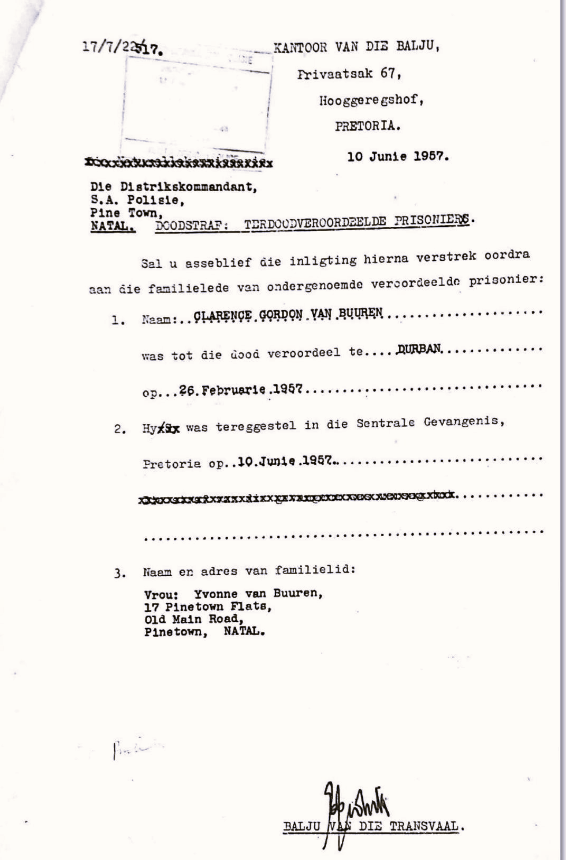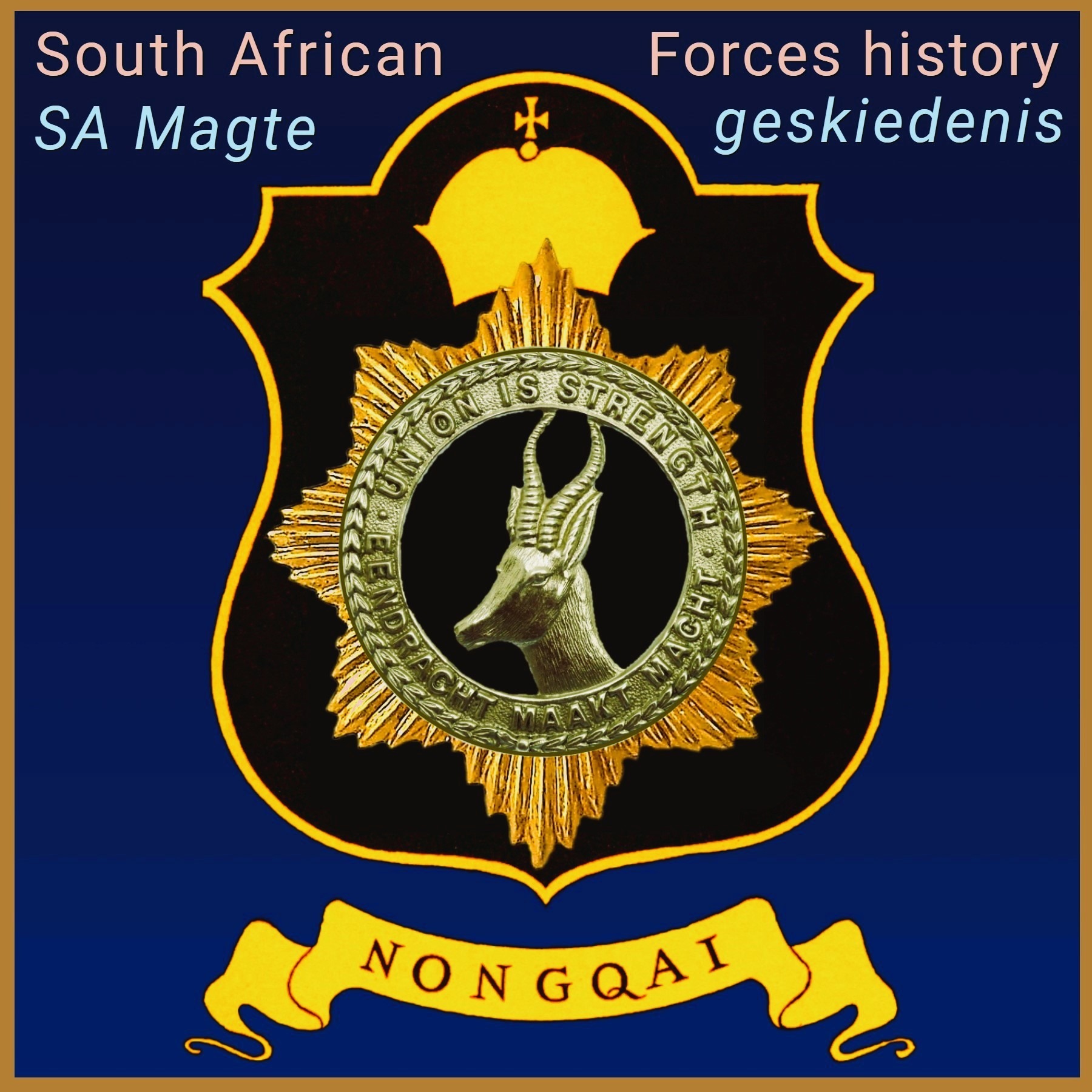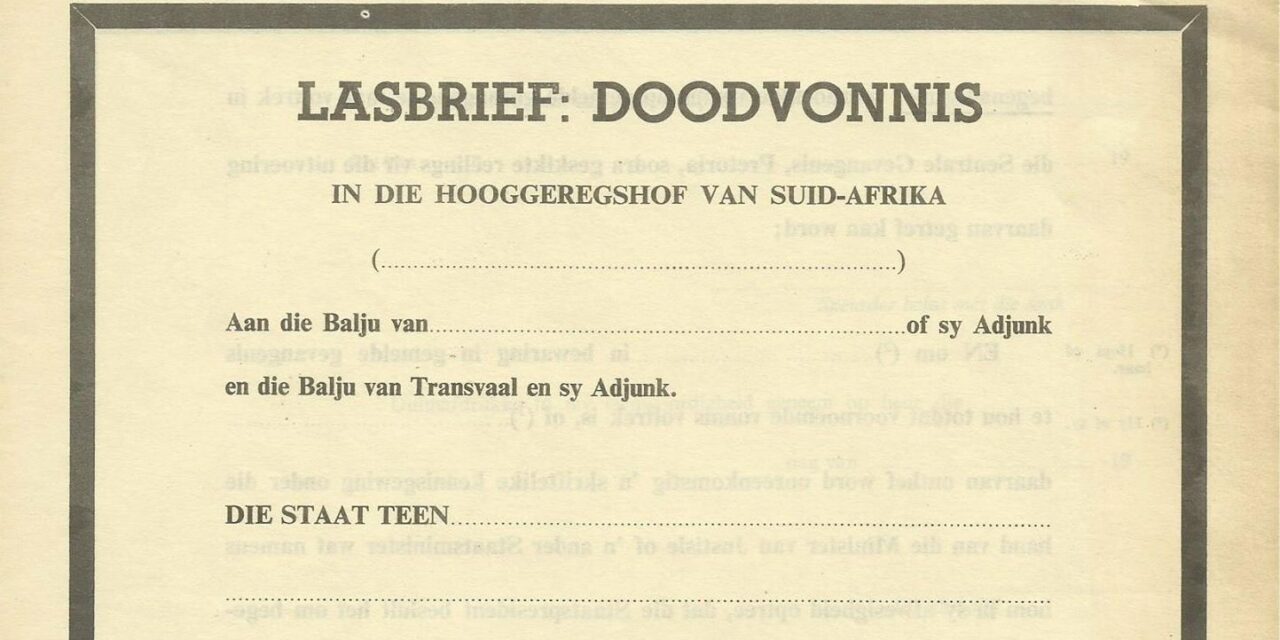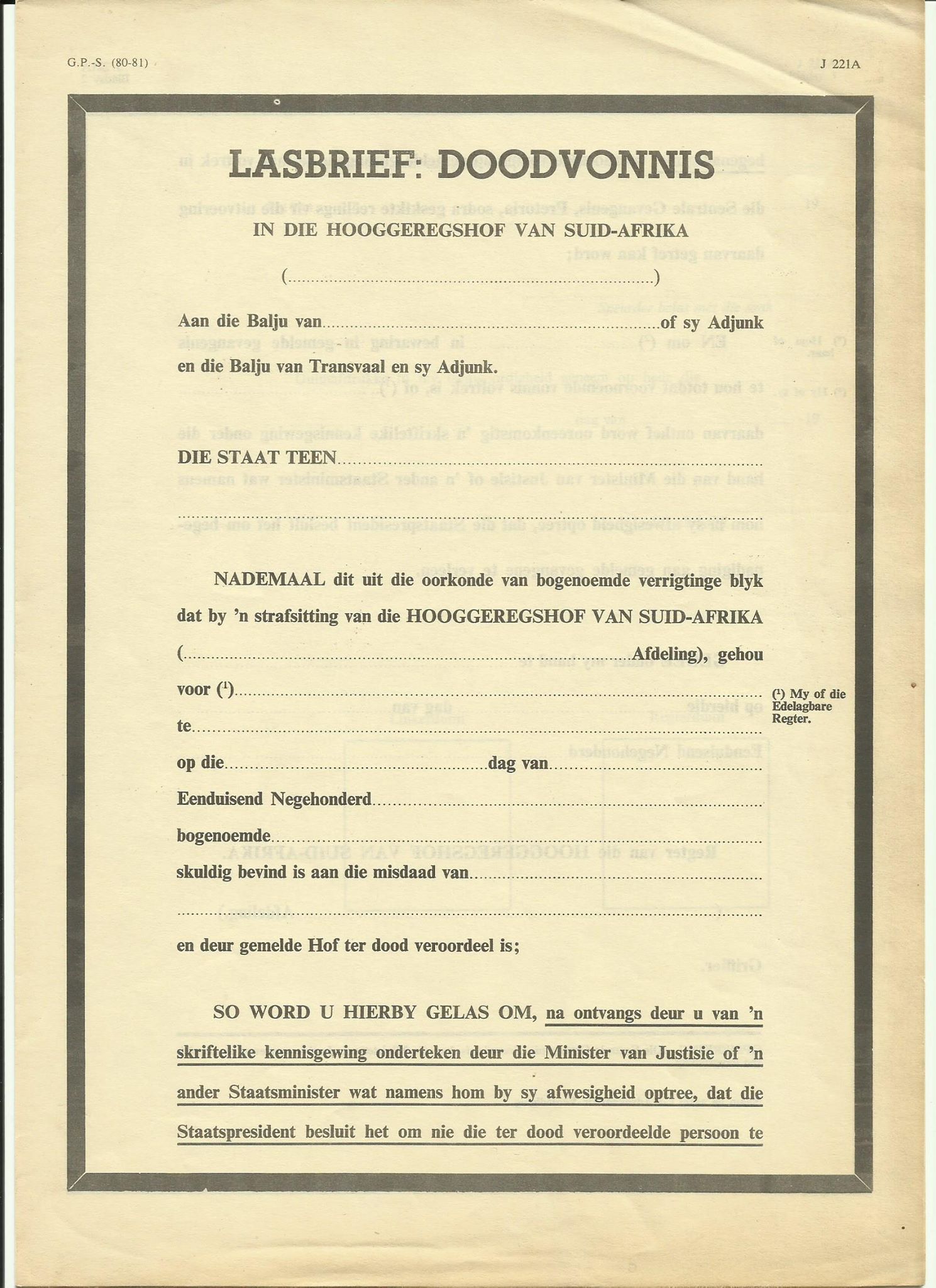Warrant : Death Penalty
On June 6 1995, capital punishment was abolished by the Constitutional Court of South Africa.
Before this and at the time when a death penalty was expected, the registrar of the court summoned the sheriff to court. Upon handing down the sentence, a warrant for execution of the death penalty (J221 – see image) was completed by the registrar and issued to the sheriff who accompanied the accused to the goal in Pretoria.
The prisoner had 14 days to appeal his or her sentence, and in the absence of clemency, he or she was hanged at 07:00 on the given morning.
On the eve of execution, the prisoner is treated to a meal of his or her choice. One memorable incident was a prisoner who ordered a KFC bucket because “I do not want to enter Hell on an empty stomach.”
Once the sentence had been executed, the Sheriff of Transvaal sent a formal notice to the district commander of the SA Police in the region from which the executed prisoner hailed, to inform the deceased’s next of kin (Pretoria, where all death sentences were executed, being located in the then Transvaal, it fell to the sheriff of that province to send out these notices).
Attached is an example of such a notice to inform the wife of the murderer Clarence van Buuren (a famous case of the 1950s) that the death penalty as ordered by the court, had been executed.
(Credit: Adv (dr) Len Els)

A memorandum attached to the public notice board at the court of jurisdiction notifying the public of the pending execution.
The notice instructs, in accordance with the judicial practice of the time, the public to inform the convict’s family of the pending execution.
In this instance, the well-known and extensively publicized Van Buuren case.


